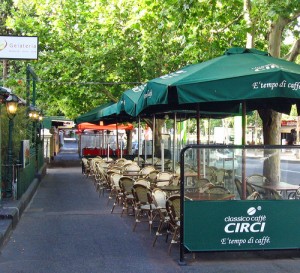The Italians are coming

Lygon Street, Melbourne
A new wave of migration from Italy to Australia is underway in numbers not seen in more than 50 years, as thousands flee the economic downturn in Europe.
This ‘second wave’ of migration from Italy saw more than 20,000 Italians arrive in Australia in 2012-13 on temporary visas. This is more than the number of Italians that arrived in 1950-51 during the previous migration boom following World War Two.
The research group Australia Solo Andata (Australia One Way) is made up of Italians in Australia and has been tracking the trend using figures from the Department of Immigration and Border Protection.
Spokesman Michele Grigoletti said he has been surprised by just how many of his countrymen are making the move to Australia.
“Italians are coming to Australia in numbers we could not expect,” Mr Grigoletti said.
“We already have the first six months of data from 2013-14 and we know that the trend of Italians arriving is on the increase again.”
Between 2011 and 2013, this constitutes a 116 per cent increase in the number of Italian citizens in Australia with a temporary visa.
Data showed working holiday visas were the most popular visa issued to Italian citizens between the ages of 18 and 30.
Almost 16,000 of the visas were granted in 2012-13, up 66 per cent on the previous financial year.
Italy’s Consul General in Sydney, Sergio Martes, said the figures were not surprising.
“We have seen similar figures in northern Europe, with Italians going to Germany and England. They are probably the two main countries receiving our young people at the moment,” he said.
“It’s a phenomenon that we think is probably going to smooth out as soon as the economic recovery starts in Italy.”
The data revealed residents of the United Kingdom, Germany and France were issued the biggest number of working holiday visas for Australia in 2012-13.
Mr Grigoletti said life in Australia did not always pan out as expected for young Italians.
“It can be difficult at the start because of barriers such as poor English and the fact that in Italy, you don’t learn the language which is spoken by everyday Australians. It’s a big difference,” he said.
The language barrier means many new arrivals pick up jobs in Italian restaurants as waiters or cooks despite being highly qualified in their home country.
But Mr Grigoletti said the opportunity to get work and build a career was attractive to many.
“To the eyes of the Italian person that has no work and no opportunity to obtain or maintain a job, it’s an opportunity to try a new life in Australia,” he said.
“It provides hope and that’s what a young person wants, hope to create a future.”
Cesira Colleluori
AMES Staff Writer












